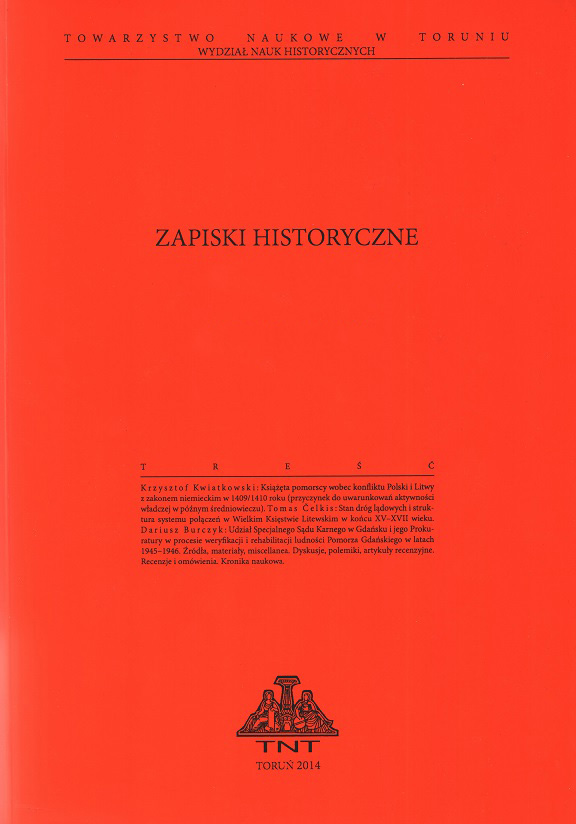In Gold and Silver
In Gold and Silver
Panoramas of Gdańsk on Coins and Medals in the 17th and 18th centuries
Author(s): Edmund KizikSubject(s): Cultural history, Visual Arts, Diplomatic history, Political history, 15th Century, 16th Century, 17th Century, 18th Century
Published by: Towarzystwo Naukowe w Toruniu
Keywords: Gdańsk;medallist;urban symbolism;panorama of the city;political iconography;17th–18th centuries
Summary/Abstract: Despite the lush development of painting in late medieval Gdańsk (the second half of the 15th – the first half of the 16th) no realistic depictions of the city or its part have survived. The first realistic panoramic view of Gdańsk was made relatively late, just before 1573. It was published in Cologne in 1575 and again in the following year in the atlas by Georg Braun and Frans Hogenberg, Civitates orbis terrarum. The novelty of Braun and Hogenberg found many followers in Gdańsk, who from the 1590s until the third decade of the 17th c. created their own original panoramic views, characterized by a much greater accuracy and faithfulness to the details of their city. The veduta of Gdańsk (221 x 35.3 cm) made in 1592/1593 by Anton Möller the Elder, was followed in 1599 by a painting version, nowadays lost, which was a gift for Venice. In 1617 Aegidius Dickmann created a panoramic view of Gdańsk with an album of 14 views of streets and districts. This image in a miniaturized form finally found its way to commemorative medals, an innovation in this part of Europe. It appeared for the first time in a 30-ducat donatywa, or a coin-medal commemorating King Sigismund III Vasa, made by Samuel Amman and Herman Han in 1617. This panorama shows a harbour city belted with powerful fortifications, with its characteristic churches, and ships on the horizon; the king is portrayed on the reverse. Apart from making the city famous, the coins with Gdańsk vedutas emphasized that in the political alliance with the King of Poland, this mighty city is equal. It is in these coins that Gdańsk paid an annual tax amounting to 2,000 Hungarian florins due to the Polish kings. The panoramic view of Gdańsk was repeatedly recorded on occasional medals and gift coins. There are at least 32 medals of this type, out of which as many as 27 were minted in the 17th c.; the remaining 5 come from 18th c. Most commonly, these were golden donatywas, sometimes commemorative historical medals minted in gold and silver, e.g. to commemorate the peace concluded in Oliwa in 1660. The last medals with the views of Gdańsk date back to 1754 and were minted to commemorate the 300th anniversary of incorporation of Prussia to the Crown, and to 1760 which was the date of the 100 th anniversary of the peace of Oliwa. Other great cities of Royal Prussia only sporadically ordered such works. The gold and silver medals of Gdańsk with the city’s panorama were complemented by the panegyric image of a proud, mighty city invoked by writers – “laus urbis” or “in honorem Magistratus Gedanensis”. In the 17th c. the City Council generously rewarded such writers. In the 18th c. a weakening city seemed to be spending less money on propaganda purposes. After the occupation of Gdańsk by Prussia in 1793 these kinds of medals were not minted anymore.
Journal: Zapiski Historyczne
- Issue Year: 83/2018
- Issue No: 4
- Page Range: 91-114
- Page Count: 24
- Language: English

